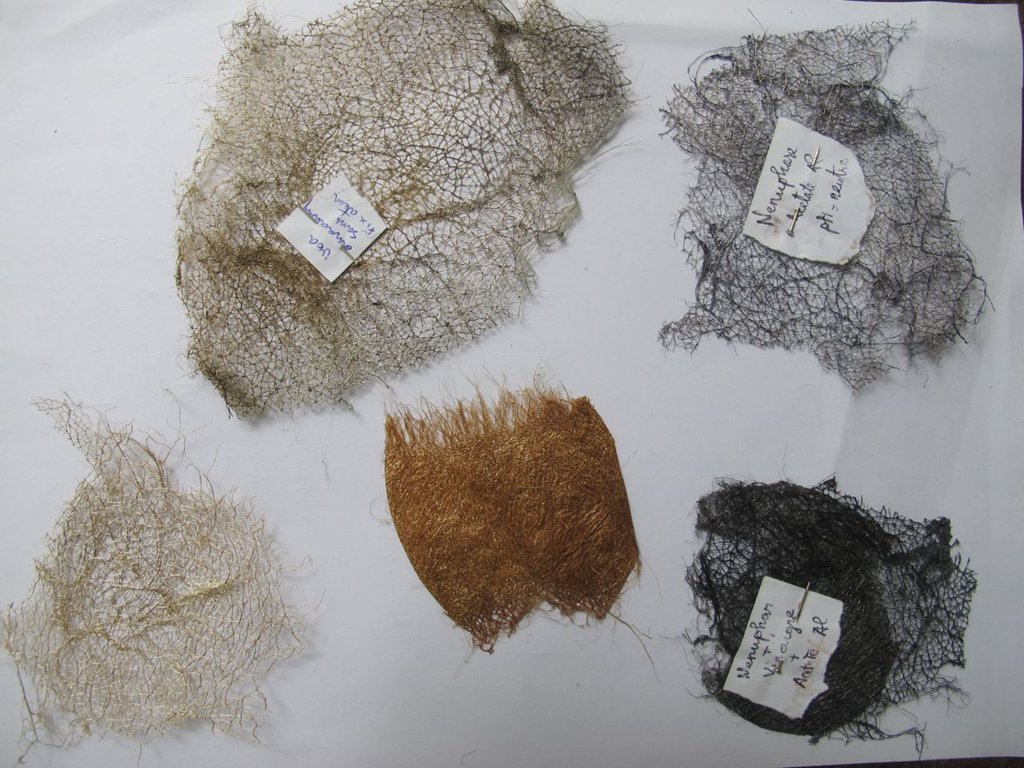By Kerry O'Neill | Assistant Director, CPALI
The bugs are sleeping, but the SEPALI team is not. Due to the arrival of the chillier winter months in Madagascar (yes, Madagascar has a winter), insect rearing has been slow while the larvae develop in their sanctuaries. The giant water bugs are, well, giant. They are still in their adult phase and the team is patiently waiting for them to mate and lay eggs. The dragonfly larvae (nymphs) are still swimming around in their little habitats working on growing big enough to look edible.
In the meantime, the SEPALI staff are busying themselves with silk production and a new project: natural dyes. In an effort to make a natural black dye to fulfil a set of unusual silk orders, the team succeeded in making dark blue, gray, burnt orange, and brown. Some of their “mistakes” actually turned out to be quite beautiful and the solitary quest for black dye has turned into a fascinating experiment featuring many different species of plants.
The first attempt was conducted with local water lilies. The SEPALI team harvested and boiled down a batch of lilies until the water was a deep-red color. Using vinegar as a fixer, the cocoons were soaked in the dye until they began to turn a light gray-blue color. In an attempt to take the color a little further, the team tried soda ash as a fixer for round two and achieved a much deeper-blue, nearly black in appearance.
Over the past couple of months, the experiments have expanded to include many species of plants including onion skins, yellow Azine tree roots, red Nato tree bark, and a vine called Engitra. And the most surprising to us? The bright, burnt-orange cocoon was dyed with just a couple of onion skins, resulting in a surprisingly vivid color! You can see the plants and corresponding results in the pictures below.
We’ll keep you posted in the next couple of weeks with updates on dyes and textiles and hopefully our insect-pets will show their little faces again soon!
Project reports on GlobalGiving are posted directly to globalgiving.org by Project Leaders as they are completed, generally every 3-4 months. To protect the integrity of these documents, GlobalGiving does not alter them; therefore you may find some language or formatting issues.
If you donate to this project or have donated to this project, you can recieve an email when this project posts a report. You can also subscribe for reports without donating.




